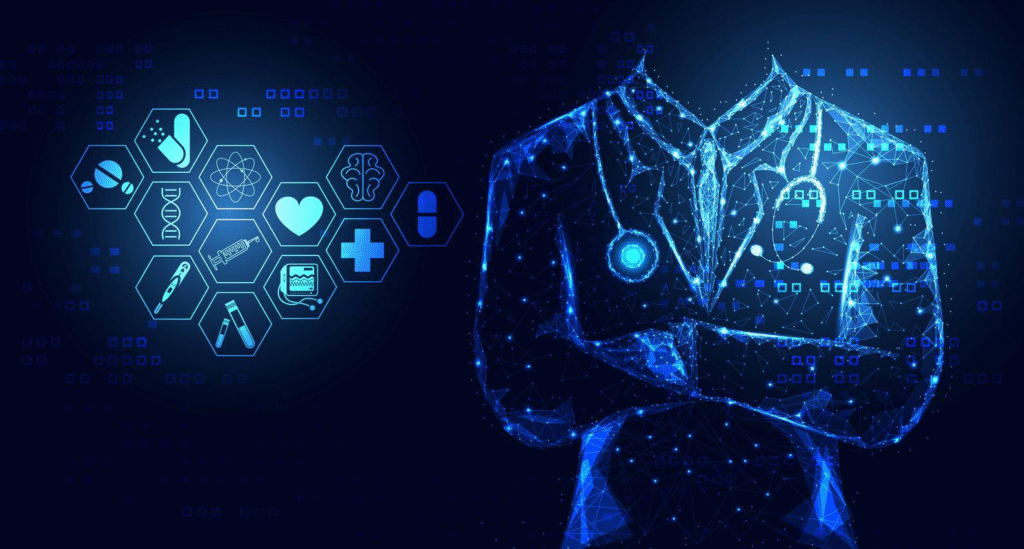Medical Marvels In an age where science fiction quickly turns into medical reality, healthcare is being redefined by an incredible wave of innovation. From gene-editing tools that correct inherited disorders to immune-based cancer therapies and lab-grown organs, today’s medical marvels are transforming how we treat disease, extend life, and improve quality of care.
This article explores the most groundbreaking cutting-edge treatments and therapies making headlines in the medical world—and how they are saving lives, reducing suffering, and shaping the future of global healthcare.
The Rise of Precision and Personalized Medicine

What is Precision Medicine?
Precision medicine tailors treatment based on a patient’s genetic makeup, lifestyle, and environment. Instead of a one-size-fits-all approach, therapies are now being designed to match an individual’s unique biological profile.
Pharmacogenomics in Action
Doctors can now test a patient’s genes to determine how they will respond to specific medications. This field, known as pharmacogenomics, helps:
- Avoid adverse drug reactions
- Choose the most effective therapy from the start
- Adjust drug dosages for optimal results
Example:
Patients with breast cancer may undergo HER2 testing to determine whether they’ll respond to trastuzumab (Herceptin).
Gene Therapy: Rewriting the Body’s Blueprint
What is Gene Therapy?
Gene therapy involves modifying or replacing faulty genes to treat or prevent disease. This revolutionary approach targets the root cause rather than just managing symptoms.
Success Stories in Gene Therapy
- Sickle Cell Disease: Patients have been cured through CRISPR-Cas9 gene editing, correcting the mutation responsible for misshaped red blood cells.
- Spinal Muscular Atrophy (SMA): Zolgensma, a gene therapy approved by the FDA, has shown remarkable success in improving motor function in infants.
- Leber’s Congenital Amaurosis: Gene therapy has restored vision in patients born with this rare genetic eye disorder.
Immunotherapy: Training the Body to Fight Cancer
What is Immunotherapy?
Immunotherapy is a type of treatment that harnesses the body’s immune system to recognize and attack cancer cells. Unlike chemotherapy, which targets both healthy and cancerous cells, immunotherapy is highly specific.
Types of Immunotherapy
- Checkpoint Inhibitors: These drugs remove the “brakes” on immune cells, allowing them to attack cancer.
- CAR T-cell Therapy: Patient’s T-cells are genetically engineered to recognize and kill cancer cells.
- Cancer Vaccines: These train the immune system to detect cancer early or prevent recurrence.
Clinical Outcomes
Patients with late-stage melanoma, non-small cell lung cancer, and leukemia have achieved long-term remission using these therapies—something rarely seen with traditional treatments.
Regenerative Medicine and Stem Cell Therapy

The Power of Regeneration
Regenerative medicine focuses on repairing or replacing damaged tissues using stem cells, which have the unique ability to develop into various cell types.
Breakthrough Applications
- Heart Disease: Stem cells are used to regenerate heart tissue post-heart attack.
- Osteoarthritis: Stem cell injections can restore joint cartilage and reduce pain.
- Spinal Cord Injury: Ongoing trials use stem cells to regrow damaged spinal nerves.
The Future: Lab-Grown Organs
Researchers are using 3D bioprinting and stem cells to grow organoids—miniature organ structures that mimic real ones. Full organ printing is on the horizon, potentially eliminating the need for donor organs.
Nanomedicine: Tiny Tools with Huge Impact
What is Nanomedicine?
Nanomedicine uses microscopic particles (nanoparticles) to deliver drugs directly to specific cells or tissues. This technology enhances treatment effectiveness and reduces side effects.
Examples of Use
- Targeted Chemotherapy: Nanoparticles can deliver chemo drugs directly to tumors without affecting surrounding tissue.
- Infection Control: Nanosilver coatings are used in wound dressings and surgical instruments to prevent infection.
- Neurological Disorders: Nanoparticles help drugs cross the blood-brain barrier, opening doors for Alzheimer’s and Parkinson’s treatments.
AI and Robotics in Modern Medicine
Artificial Intelligence in Diagnosis
AI algorithms can analyze X-rays, CT scans, and MRIs faster than humans, detecting abnormalities that might be missed by radiologists.
Examples:
- Google DeepMind’s AI can diagnose over 50 eye diseases from retinal scans.
- AI tools in pathology are identifying cancer subtypes with over 90% accuracy.
Robotic Surgery
Robotic systems like the da Vinci Surgical Robot provide:
- Enhanced precision
- Smaller incisions
- Faster recovery times
They are used in urology, gynecology, cardiac, and general surgery.
Remote and Autonomous Robots
- Telerobotics enable surgeons to operate on patients thousands of miles away.
- Autonomous robots deliver medications, disinfect hospital rooms, and assist in rehabilitation therapy.
mRNA Technology Beyond COVID-19
How mRNA Works
mRNA tells the body’s cells how to produce proteins that trigger an immune response. This approach was famously used in Pfizer and Moderna’s COVID-19 vaccines.
Expanding Applications
mRNA is now being explored for:
- Cancer vaccines personalized to tumor antigens
- HIV and malaria vaccines
- Autoimmune diseases, where mRNA instructs the immune system to calm down
Psychedelic Therapy: A New Frontier in Mental Health
Backed by Science
Once considered fringe, psychedelic substances like psilocybin (magic mushrooms) and MDMA are now recognized for their therapeutic potential in mental health.
Clinical Trials Show Promise
- Psilocybin-assisted therapy has been effective in treatment-resistant depression and end-of-life anxiety.
- MDMA-assisted therapy for PTSD has entered Phase 3 trials with strong success rates.
Therapy is strictly supervised and administered in clinical settings to ensure safety and efficacy.
Telemedicine and Digital Health
The Rise of Virtual Care
Telemedicine exploded during the COVID-19 pandemic and remains a vital tool in 2025. It offers:
- Faster consultations
- Broader access in rural areas
- Lower healthcare costs
Mobile Health Apps
Apps now offer:
- Medication reminders
- Symptom tracking
- Virtual therapy
- Disease education tools
Platforms are being integrated with wearables to provide real-time health data to doctors.
Artificial Organs and Bioprinting
From Science Fiction to Clinical Trials
Artificial organs, such as mechanical hearts, kidney devices, and synthetic lungs, are now being tested in clinical trials.
Bioprinting Advances
- Bioprinted skin for burn victims is already in use.
- Bioprinted cartilage is used in reconstructive surgeries.
- The goal is to create entire functioning organs like kidneys and livers in the next decade.
Conclusion: The Dawn of a New Medical Era

We are witnessing a golden age in medicine. What was once science fiction—editing genes, printing organs, training the immune system to cure cancer—is now part of clinical reality. These medical marvels are not just about technological progress; they are about hope, longevity, and better quality of life for people around the world.
Yet challenges remain. These therapies are often expensive and may be out of reach for many. Regulatory, ethical, and logistical hurdles must be overcome to ensure that innovation does not widen healthcare inequality.
Still, one thing is clear: the future of medicine is bright, and it’s already here.
Also Read : Essential Medical Testing for a Healthy Life: What You Need to Know
Frequently Asked Questions (FAQs)
What is the most promising new medical treatment today?
Gene therapy and CAR T-cell therapy are among the most promising, offering long-term remission and potential cures for serious genetic and cancer-related conditions.
Are AI diagnostics more accurate than human doctors?
AI systems can detect patterns in imaging and lab data that may be missed by humans. However, AI works best when combined with human oversight, not as a replacement.
What diseases can mRNA vaccines treat in the future?
mRNA technology is being tested for HIV, cancer, Zika virus, influenza, and even rare autoimmune diseases.
Can stem cells really regrow organs?
Stem cells can regenerate specific tissues, and combined with bioprinting, may one day grow full organs for transplant. However, full organ regeneration is still in experimental stages.
What’s the difference between immunotherapy and chemotherapy?
Chemotherapy attacks rapidly dividing cells, both healthy and cancerous. Immunotherapy boosts the immune system to selectively target cancer cells, often with fewer side effects.
Are psychedelic therapies legal?
Currently, most are limited to clinical trials. However, some U.S. cities and countries have decriminalized or legalized supervised use in therapeutic settings.
How soon will artificial organs be available?
Artificial hearts and kidneys are in clinical trials now. Full approval and availability could happen within the next 5 to 10 years, depending on outcomes.
Is telemedicine as effective as in-person care?
For many non-emergency conditions like mental health, chronic disease management, and follow-ups, telemedicine is equally effective and far more accessible.
Are there risks with gene editing?
Yes. Off-target effects, long-term impacts, and ethical concerns about germline editing (inheritable gene changes) are under scrutiny. Clinical use is currently focused on non-inheritable, somatic gene edits.
Can wearable devices prevent serious health issues?
Yes. Devices like smartwatches now detect atrial fibrillation, low oxygen levels, and irregular sleep patterns, alerting users to seek early medical intervention.




